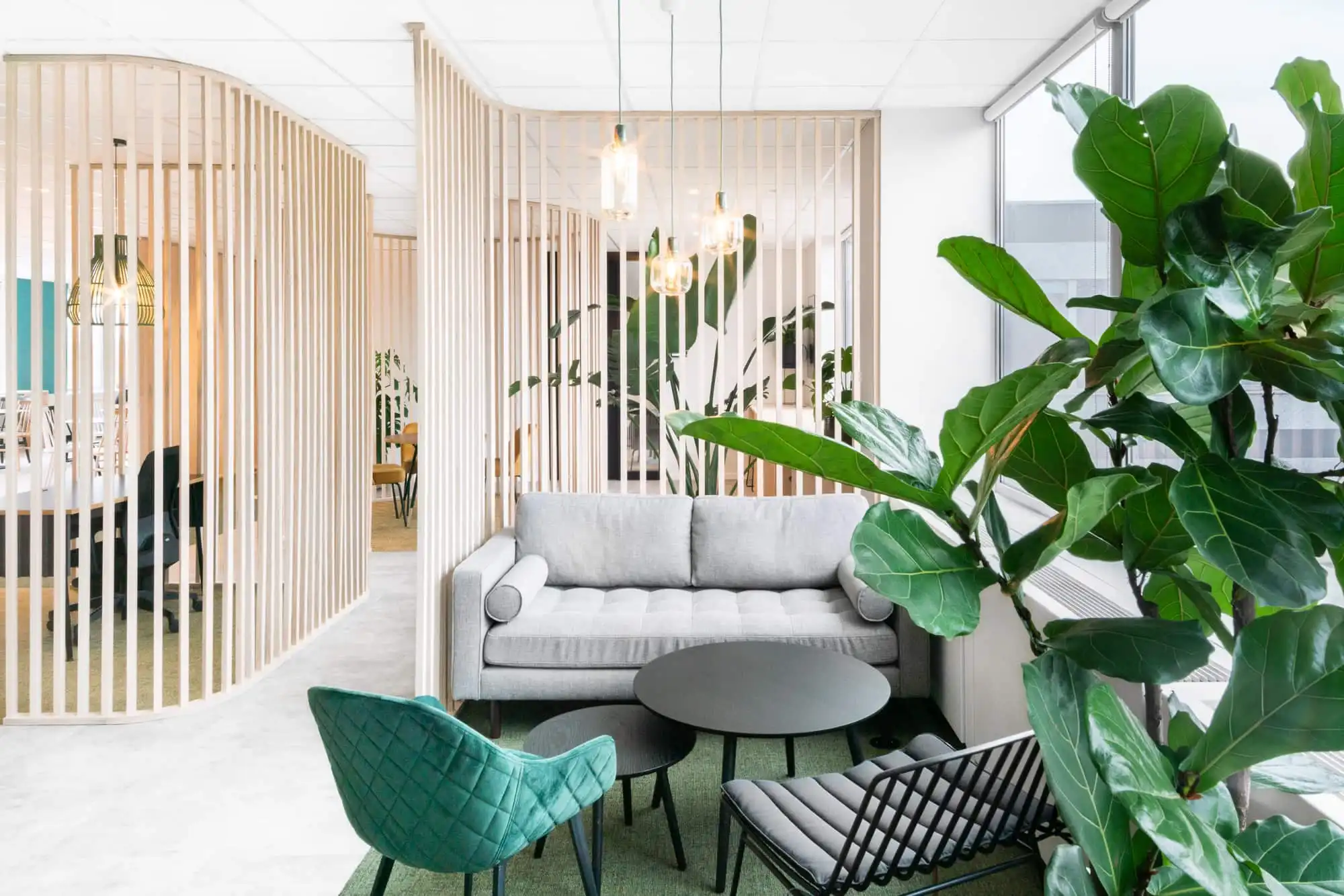One of the most prominent trends in interior design across Europe is the embrace of Biophilic Design. This style emphasizes the connection between nature and indoor spaces, promoting well-being and sustainability. Here’s a detailed look at this trending design style:
Biophilic Design: Bringing the Outdoors In
1. Concept and Philosophy:
Biophilic design is grounded in the idea that humans have an innate affinity for nature. This design philosophy seeks to create environments that foster a deeper connection to the natural world, which can enhance mood, creativity, and overall well-being.
2. Key Elements:
- Natural Materials: Use of wood, stone, and organic textiles to create a warm and inviting atmosphere.
- Indoor Plants: Incorporating greenery via potted plants, vertical gardens, and living walls to improve air quality and aesthetics.
- Natural Light: Maximizing daylight through large windows and open spaces, often with a focus on unobstructed views of the outdoors.
- Water Features: Including elements like fountains or aquariums to introduce the calming effects of water.
- Color Palette: Earthy tones and colors inspired by nature, such as greens, browns, and blues, which foster a sense of calm.
3. Functional Spaces:
Biophilic design is not just about aesthetics; it also considers functionality. Spaces are designed to cater to various activities, whether it’s for relaxation, work, or socializing, all while maintaining a connection to nature.
4. Sustainable Practices:
With increasing awareness of environmental issues, this design style often incorporates sustainable practices. This includes using recycled materials, energy-efficient appliances, and designing for longevity to reduce waste.
5. Popularity in Europe:
European cities are leading the way in adopting biophilic design principles. From modern urban apartments in Berlin to chic cafes in Copenhagen, designers are transforming spaces to enhance their occupants’ connection to nature.
6. Future Trends:
As the demand for healthier living environments grows, biophilic design is expected to evolve. Innovations in technology, such as smart gardening systems and sustainable materials, will further enhance this trend.
In conclusion, biophilic design is more than just a trend; it represents a shift towards creating harmonious living spaces that prioritize mental and physical health while respecting the environment. As this style continues to gain momentum in Europe, it is likely to influence interior design practices worldwide


Leave a Reply